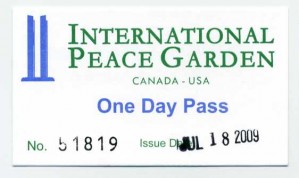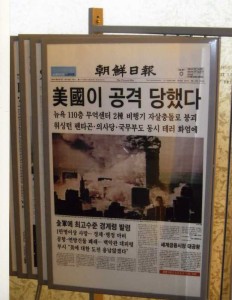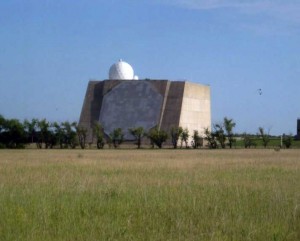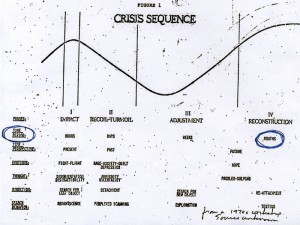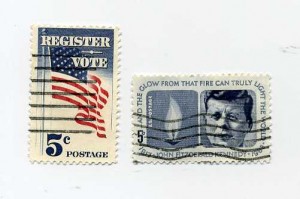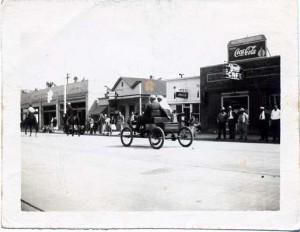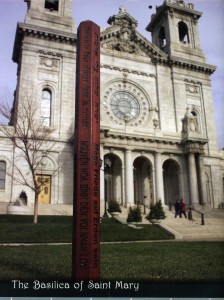#58 – Health Care Policy: Some Unpleasant Realities to consider
This post is #2 of 13 on this topic: The others are at July 24, 27, 29, 30, 31, August 1. 2,5,6,7,10,15. A final summary commentary is at October 9, 2009.
Note the index for previous commentaries, including #56, published on July 24, 2009. #56 includes the “talking points” the Republicans in Congress will be taking home with them for town meetings in the upcoming recess. It is important to understand these, and some counter arguments (included), to be well informed in this debate.
Today I am (I think) very well insured. This has been true for many years. (I say “I think” because one never knows for sure what surprises lurk in the fine print, not to be found until you find a specific coverage is excluded for some reason.)
I wasn’t so fortunate as to be insured in my early adult life. Following are two stories from my own experience. I think they’re worth reading.
Story #1 – submitted recently as an op ed to a major newspaper, and as of today not printed.
Today the front-and-center issue is Health Care, tomorrow it will be something else. At the end of the day, we the people will get what little we deserve for our short-sightedness. Our legislators do our bidding: it’s called getting elected or re-elected.
We make unwise choices all the time, without considering the possibility that those choices may have dire consequences for ourselves or others we love.
Consider one real example: my own.
In mid-October, 1963, fresh out of the U.S. Army, I took a teaching job in Minnesota. My young wife had just started her first teaching job in another district. There was no such thing as group insurance in those days. We were in our early twenties and healthy…we thought. When the hospital/doctor insurance man came calling, I couldn’t afford the hospital plan, but I did get the doctor portion. (Had I been “smart”, then, and gotten the hospital portion, it probably would have disqualified “pre-existing conditions”, just as today.)
Two weeks after I started teaching, my wife had to quit her teaching job for health reasons. Four months later our son was born…two of those months my wife was in a hospital 70 miles away. She was hospitalized for several weeks after the birth. From then on she was either almost totally disabled or hospitalized. [*]
By May of 1965 her only possibility for survival was a kidney transplant, and one of the few hospitals doing that procedure then was the University of Minnesota Hospital. We had no insurance. They finally admitted her. I’ll never forget our wait for that decision at the hospital.
Two months later, July 26, 1965, she died in that hospital. She didn’t live long enough to get the transplant. At 25 I was widowed, parent of an infant, newly employed as a teacher in the twin cities, and owing the equivalent of almost four years wages primarily for medical expenses, not counting the charity of hospitals or clinics who never billed us for services they knew we could never afford.
In October, 1965, I made a list of debts and made an appointment with an attorney to file bankruptcy. It was something I didn’t want to do.
I never filed bankruptcy.
After a long wait, North Dakota Public Welfare picked up two-thirds of the medical bills – the University of Minesota portion; and a local North Dakota Community Hospital forgave another portion. I was able to survive. I could make a long list of other institutions that saved me from financial disaster that two years. I was a charity case.
If anything, I have tended to be over-insured since that long ago time. I am one of the lucky ones who had access to insurance through a group plan during my work years and can now afford the necessary supplements to Medicare today. (I hope I have the right coverage, which covers the right things, whenever….)
But I’ll never forget when reality slapped us in the face in two very hard years, 1963-65.
There is no excuse in this still prosperous (and very self-centered) society of ours to not fully cover every citizen, and to have our government be the provider. After all, government is “we, the people”.
Those who think they’ve got this all figured out, and can cover every contingency by their own great planning, consider the possibility: you might be wrong. Or that child or grandkid or cousin or nephew or friend of yours might need the benefit you said it wasn’t the governments responsibility to provide.
Those legislators we elected are in the end analysis going to do our bidding on health care and other issues.
Let’s encourage them to make wise, and not stupid, decisions.
* – Updated October 9, 2009: Four months before she died, we thought she might be pregnant – which would have certainly been a death sentence for she and the child. Abortion would have been the only solution to save her. She turned out not to be pregnant, but this close call has made me, an active Catholic, irrevocably “pro-choice”.
Story #2
In August, 1994, I was in Cebu City, Philippine Islands. Cebu City was and is a major city of nearly a million population.
One day my wealthy host was taking me on a tour, and at one point he made a statement which I have never forgotten: “In the Philippines, if you’re rich you can get as high quality medical treatment as anyone in the United States. If you’re poor, you die.”
He made the statement in a matter of fact way, and we didn’t pursue the topic. Later we went to Catholic Mass. Cebu City claims the Cross of Magellan, who arrived in there in 1565. It is the seat of Philippine Christianity (Catholicism). My host and his family were devout Catholics.
That evening, we guests were given a ride to a tourist attraction overlooking the Cebu City area. It was dusk, and by the time we arrived at the overlook, it was dark. Along the unlit road up the mountain were occasional fires, and gatherings of poor people, their homes and shops often in the ditches. It gave dimension to the cityscape off in the distance, far below.
No one seemed to catch the irony of the moment: a wealthy family taking American visitors through the midst of abject poverty to a tourist attraction.
A few months earlier, back in the states, Harry and Louise, the darlings of the anti-Health reform folks in the United States, had teamed with the middle class to beat back health care reform, derisively called “Hillary care”. Three months later, the Republicans overwhelmed the Democrats in the 1994 Congressional elections, remaining in control of the Congress for a dozen years, and getting control of the White House from 2001 through 2008. Health related industries became a cash cow for the already wealthy. What was bad in 1993 has likely become worse, overall.
The Health Care Reform initiatives that were passed in recent years further enriched the already rich, and created renewed pleas for true reform of a massive and ailing industry.
Now the Republicans and the Health Industry are calling for not rushing into “reform” (“let’s do it right”) while at the same time doing everything in their power to obstruct and confuse and disrupt responsible attempts to make positive changes. Immense amounts of money are tossed into efforts to confuse the middle class who’ll pay the price.
The contemporary version of Harry and Louise has been created for media use, and success will be measured by failure of reform, which will then be termed a success…. It’s how simple propaganda works.
The desperately poor we saw in Cebu City that night had nothing, and had no clout whatsoever. If they were sick, they had no choice. In good Catholic Cebu City, they either got well on their own, or they died. The rich could fly to Manila, or on to Japan or San Francisco for top shelf medical procedures. The poor died in the ditches.
We in the United States still have means to impact the system and prevent our descent into third world status. But do we possess the will to fight off the profiteers and the big corporations who look on Health Care as a profit center? I’m not at all sure we do.
We have more clout than those poor Filipinos. But will we use it?
Its our choice: to believe the propaganda, and go with the flow…or to get engaged in fixing a broken system.
If you are the one percent of the population that is considered wealthy, or if you think you will be, then there’s perhaps not much to worry about. Like the guy in the Philippines, you’ll get your care. But if you’re a part of the other 99, including pretty prosperous, then you better be very concerned about what’s ahead, and get engaged.
Caveat emptor.
Update: July 26, 2009
After posting this item we went, as usual, to the 9:30 Mass at Basilica of St. Mary in Minneapolis. This particular Sunday the celebrant was Fr. Greg Miller from St. John’s University, and the Gospel was the one about the Loaves and the Fishes, and Fr. Greg’s general topic was “hunger and thirst for justice”. He talked on three themes, all from the previous weeks news:
The Professor Gates/Cambridge police affair and its message about continuing injustice in this country.
The need for Universal Health Care
The need, also, for Immigration Law reform
I suspect someone wrote the Archbishop complaining about Fr. Greg’s meddling in politics. No matter. A long-time pillar of the Catholic Church – one reason why I remain an active member – is its commitment to Justice (which is very different from Charity).

